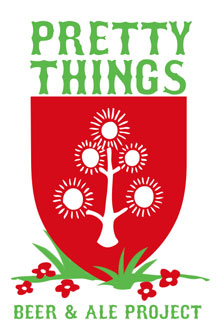If you believe the fliers, Lederhosen and a boot of beer will grant you the authentic German drinking experience at Oktoberfest.
Yet regardless of an advertisement’s promise, some Oktoberfest organizers in the U.S. might confess that their operation depicts nothing more than an Americanized version of the real, Bavarian thing. Can the same be said for the beer?
Depends on the style, it seems.
American craft brewers, especially some of the founding fathers at Boston Beer Company and Redhook, for example, have culled and modernized recipes from the Germans, Belgians, English and Irish, to name a few. As a result, many forms of the faraway beer styles can be found in the U.S. In certain cases, American brewers seem to have digested the influence and gone their own way. In other cases, American brewers have sought emulation and, in their minds, succeeded.

Dann Paquette, a former brewer at Daleside Brewery in Harrogate, North Yorkshire, England and the co-founder and head brewer for Somerville, Mass.-based Pretty Things Beer and Ale Project, will tell you that American beers don’t replicate the real stuff on the other side of the pond.
“American brewers just sort of went their own way,” Paquette said.
Take a look around the craft landscape and you’ll find a number of brews with the word “English” used as an adjective. In April 2012, Sprecher Brewing Co. in Glendale, Wis., introduced Hooligan English Pale Ale, which is made with caramel malts and Ahtanum and Cascade pellet hops. This past April, 21st Amendment Brewery in San Francisco collaborated with English homebrewer Richard Brewer-Hay to create Imperial Jack, an amber ale made with Belgian honey malt and chocolate malts. In July, Full Sail Brewing of Hood River, Ore., released an English Pale of its own — a copper ale with flavors of toast and light caramel.
No matter the descriptions of the American labels, Paquette said that a real English brewer would never use Cascade, Chinook or Centennial hops. Rather, he said that a fine bitter ale fit for a cask contains nothing but some barley, hops (from the British Isles if you can get them), yeast and water.
“You really don’t need too much else,” he said.
Paquette also said that this cask style can’t be properly mirrored in the U.S. because of infrastructural differences. He said that in the U.S., the basements of bars and pubs (if the places even have basements) contain coolers that pump out heat, creating warm air unfit for a cask. These coolers stock the many beers that comply with the American drinker’s desire for variety and experimentation. Yet these desires don’t exist at such an extreme level overseas. In England, a cask may prosper in a cool cellar — an anomaly in the U.S.
“I would love to see people do it here and do it right, but the whole infrastructure needs to change,” he said.
Despite his affinity for this style, Paquette admits that his own beers have lots of English influence, but are still different. He called Pretty Things beers, such as the flagship Jack D’Or, a mix between production lager and bitter ale.
So while Paquette doubts that Americans will be making traditional bitter ale any time soon, he doesn’t lament this.
“To us East Coasters, it’s just as easy to fly six hours and you’re in the actual real culture,” he said. “We don’t need to recreate it in strip malls.”
Americans may fail to replicate what Paquette deems a true English beer, but that sentiment doesn’t carry over to all brewers.
